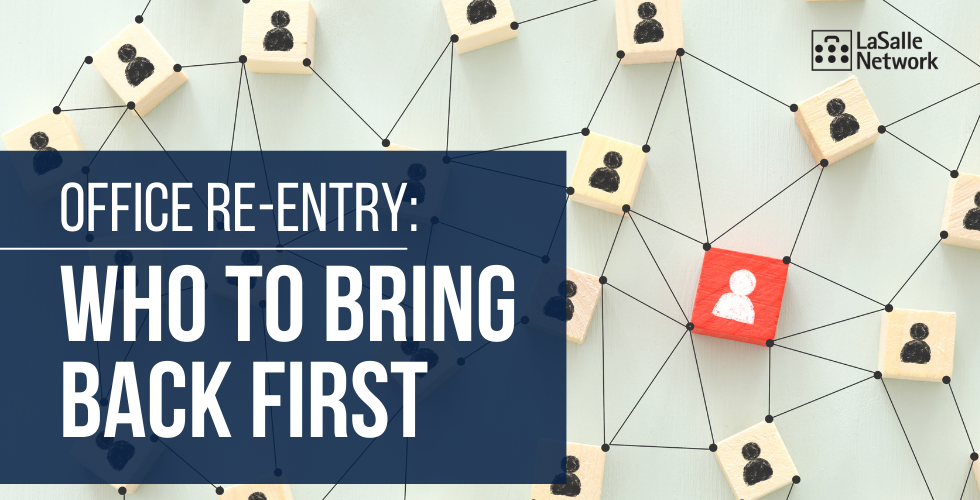According to a recent LaSalle Network survey of CEOs, COOs, and heads of HR and finance, a majority of companies plan to bring employees back into the office by Fall 2021 with 70% reporting they will phase employees back in. While deciding how to structure their phasing-back plans, business leaders must decide who to bring back first.
Below are a few examples of how some companies have decided to structure their workforce’s re-entry, and who they are bringing back to the office first.
LEADERS:
Many organizations are first determining whether their front-line managers, as well as mid-level and senior-level executives, feel comfortable returning to the workplace. Having leadership present can help reinforce the new norms and protocols, while providing direction and maintaining morale.
VOLUNTEERS:
Some companies are taking volunteers of employees electively going back into the office. In this case, companies will want to ensure the volunteers selected include the appropriate personnel to handle enforcing and training others on new safety procedures. It also will need to include personnel to manage the facility and maintain sanitization standards.
TEAMS:
Some companies have decided to phase employees back into the office by teams. In this case, consider what teams would most benefit from returning to the office. The teams to consider first may include executive leadership, IT, finance and others who would most benefit from increased desk space and technology.
THOSE UNABLE TO WORK REMOTELY:
Employees without a functional work from home situation may need to be among the first to come back to the office. While considering who this may include, consider not only those whose roles require being in the office, but also those who may have been working from home in an environment that is not conducive to productivity or health. This may include a myriad of challenges such as a full or busy household, constraints on internet or lack of technology, lack of a quiet workspace or an unstable emotional environment. While these instances may be unknown to the employer, consider sending a survey regarding employees’ work from home situation including a question on whether their environment has been conducive to remote work.
Also be aware of who may need accommodations and decide how your organization will support those not able to come back into the office at this time. Two of the most common groups who may request accommodations include parents of young children and individuals considered at a higher risk of complications if they were to fall ill. Look at the expanded, paid FMLA leave available under the Families First Coronavirus Relief Act to reference reasonable accommodations for this group.
The CDC suggests that employees who are immunocompromised or in some other way at risk self-identify to their Human Resources team. If possible, continue to offer remote work as an option and make returning to the office voluntary, so that high-risk individuals can opt to stay away from the worksite. If mandating employees work in person, remind everyone that certain leave options or workplace accommodations may be possible for anyone with concerns about their health. If an employee asks for an accommodation, engage in the ADA interactive process.
For more information on when and how companies are returning to the office, communication strategies, vaccine considerations and more, download our Office Re-Entry Index here.
If you’re adding new talent to your teams, let us help! Get connected here.





